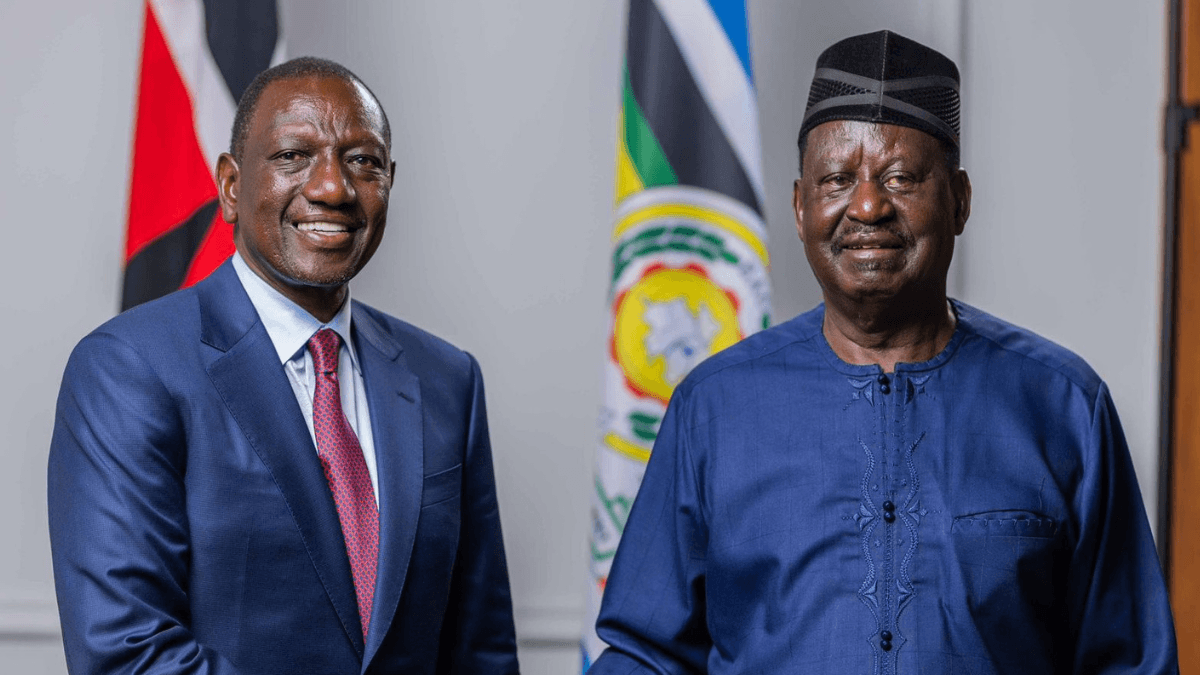Loading News Article...
We're loading the full news article for you. This includes the article content, images, author information, and related articles.
We're loading the full news article for you. This includes the article content, images, author information, and related articles.
The Kisumu district, long synonymous with unwavering support for Raila Odinga, faces a profound identity crisis and economic uncertainty following his recent passing. Residents are struggling to reconcile their political fervor with the urgent need for sustainable development.

Kondele, a vibrant district within Kisumu City, remains in a state of profound mourning and reflection following the death of former Prime Minister Raila Odinga on Wednesday, October 15, 2025. The area, often dubbed Odinga's "political bedroom" or "Barracks" due to its fierce loyalty, is grappling with the emotional void left by a leader many considered their unwavering source of direction and hope. Residents, some unable to resume their daily businesses, are finding solace in sharing memories of Odinga's impactful life.
The district's strong political identity is deeply intertwined with Odinga's legacy, tracing back to his father, Jaramogi Oginga Odinga. Kondele has historically been a focal point for political expression and protest, with notable demonstrations dating back to 1969 and continuing through significant periods of political upheaval, including the 2007 post-election violence. This history has cemented Kondele's reputation as a politically charged area, where residents' socio-economic and political ideologies are closely held.
Beyond its political vibrancy, Kondele operates a 24-hour economy, bustling with supermarkets, hotels, restaurants, and apparel retail. However, the region, like much of Nyanza, has long faced significant economic challenges. Nyanza province has historically reported some of the highest negative ratings for national economic conditions, with 67% of residents expressing dissatisfaction in a past Afrobarometer survey.
Youth unemployment remains a critical concern across Kenya, with the overall national unemployment rate at 12.7 percent. However, youth aged 15-34, who constitute 35 percent of the Kenyan population, face a significantly higher unemployment rate of 67 percent. This demographic reality is particularly acute in urban areas like Kisumu, where youth unemployment rates can range from 35% to 60%. The economic struggles are further compounded by a reliance on raw resource exports, with Lake Victoria's fish often processed abroad and Migori's gold leaving unprocessed, leading to billions in lost value for the Nyanza region.
In the wake of Odinga's passing, there is a growing call for a shift in focus from politics to policy and economic development in Nyanza. Professionals from the region have been challenged to invest in local economic opportunities, with the Kenya Kwanza government assuring its commitment to promoting economic growth and job creation. Initiatives like the Nyanza International Investment Conference aim to showcase the region's economic potential and attract both local and foreign investors, focusing on sectors such as the blue economy.
The Nyanza region, comprising counties like Kisumu, Homa Bay, Kisii, Migori, Nyamira, and Siaya, possesses rich natural resources, talent, and heritage. Despite this, it has been hampered by political focus and infrastructure gaps. There is a push for local processing mandates to ensure that a percentage of produce, such as fish, cotton, or sugarcane, is processed within the county before export, thereby increasing value.
The political landscape of Nyanza is expected to undergo a significant shift in Odinga's absence. His death creates a vacuum that other leaders will struggle to fill, and the future direction of the Orange Democratic Movement (ODM) party, which he transformed into a regional powerhouse, remains uncertain. Observers predict increased political competition in the Luo Nyanza region, though some believe it may align with the direction Odinga had set for cooperation with the current government.
The immediate challenge for Kondele and the broader Nyanza region is to navigate this political transition while simultaneously addressing pressing economic issues. The focus on investment, value addition, and infrastructure development will be crucial in transforming the region's economic narrative. The effectiveness of county governments in leveraging diaspora remittances and implementing strategic public and private sector investments will be key to unlocking Nyanza's potential.
The coming months will reveal how Kondele and the wider Nyanza region adapt to the post-Odinga era. Attention will be on emerging political leadership, the implementation of economic development initiatives, and the ability of local and national governments to address the persistent challenges of unemployment and underdevelopment. The Nyanza International Investment Conference and subsequent efforts to attract investment will be critical indicators of the region's economic trajectory.
Keep the conversation in one place—threads here stay linked to the story and in the forums.
Other hot threads
E-sports and Gaming Community in Kenya
Active 6 months ago
Popular Recreational Activities Across Counties
Active 6 months ago
The Role of Technology in Modern Agriculture (AgriTech)
Active 6 months ago
Investing in Youth Sports Development Programs
Active 6 months ago